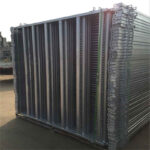Mastering the Art of Bending Cattle Panels: A Comprehensive Guide
Are you looking to create custom enclosures, trellises, or innovative structures on your farm? Bending cattle panels might be the solution you’ve been searching for. This comprehensive guide will walk you through everything you need to know about manipulating these versatile farm tools, from basic techniques to advanced applications.
Why This Article is Worth Reading
Whether you’re a seasoned farmer or a DIY enthusiast, learning how to bend cattle panels can open up a world of possibilities for your projects. This skill allows you to create custom shapes and structures that perfectly fit your needs, saving you time and money compared to pre-fabricated options. By the end of this article, you’ll have the knowledge and confidence to tackle a wide range of projects using bent cattle panels.
What Are Cattle Panels and Why Bend Them?
Cattle panels, also known as livestock panels, are rigid wire mesh fencing sections typically used for containing animals. But why would you want to bend them?
- Versatility: Bending allows you to create custom shapes for various applications.
- Cost-effective: Modifying existing panels is often cheaper than buying specialized equipment.
- Durability: Galvanized cattle panels are sturdy and long-lasting, even when bent.
Tools and Materials You’ll Need
Before you start bending, gather these essentials:
- Cattle panels (galvanized for longevity)
- Heavy-duty gloves
- Safety glasses
- Mètre à ruban
- Marker
- Bolt cutters (optional)
How to Choose the Right Cattle Panel for Bending
Not all panels are created equal. Consider these factors:
- Wire gauge: Thicker wire is stronger but harder to bend.
- Mesh size: Smaller openings provide more support but less flexibility.
- Panel dimensions: Standard sizes are typically 16 feet long and 50-52 inches high.
Basic Bending Techniques: Getting Started
Ready to bend? Here are some fundamental methods:
- Manual bending: Use your body weight and leverage for gentle curves.
- Corner bending: Create 90-degree angles for square structures.
- Arch formation: Perfect for trellises and hoop houses.
Advanced Bending Methods: Taking It to the Next Level
For more complex shapes, try these techniques:
- Using a pipe as a form: Create consistent curves by wrapping the panel around a large pipe.
- Tractor-assisted bending: Utilize your tractor’s power for larger projects.
- Custom jigs: Build a wooden frame to shape multiple panels identically.
Common Applications for Bent Cattle Panels
The possibilities are endless! Here are some popular uses:
- Garden trellises and arbors
- Hoop houses and greenhouses
- Animal shelters and pens
- Decorative garden features
- Reinforcement for concrete projects
Tips for Working with Bent Cattle Panels
Make your projects easier with these pro tips:
- Always wear gloves and eye protection.
- Work on a flat, level surface for consistent results.
- Use zip ties or wire to secure bent panels in place.
- Consider painting galvanized panels for a custom look.
Troubleshooting Common Bending Issues
Encountering problems? Here’s how to solve them:
- Uneven bends: Use a template or guide for consistency.
- Panel kinking: Apply pressure gradually and evenly.
- Difficulty maintaining shape: Secure bent panels immediately with temporary supports.
Maintaining and Caring for Bent Cattle Panels
Extend the life of your creations with proper care:
- Regularly inspect for rust or damage.
- Touch up any scratches in the galvanized coating.
- Store unused panels flat to prevent warping.
Safety Considerations When Bending Cattle Panels
Stay safe while you work:
- Use proper lifting techniques to avoid injury.
- Be aware of spring-back when releasing pressure on a bent panel.
- Keep children and pets away from the work area.
Innovative Project Ideas Using Bent Cattle Panels
Get inspired with these creative applications:
- Vertical gardening systems
- Unique fencing designs
- Sculptural yard art
- Portable animal enclosures
- DIY storage solutions
Key Takeaways: Mastering Cattle Panel Bending
Remember these crucial points:
- Proper tool selection and safety gear are essential.
- Start with basic techniques and progress to more advanced methods.
- The versatility of bent cattle panels makes them useful for countless projects.
- Regular maintenance will ensure your creations last for years.
By mastering the art of bending cattle panels, you’ll unlock a world of creative possibilities for your farm, garden, or homestead. With practice and patience, you’ll be crafting custom structures that perfectly suit your needs and showcase your ingenuity.









